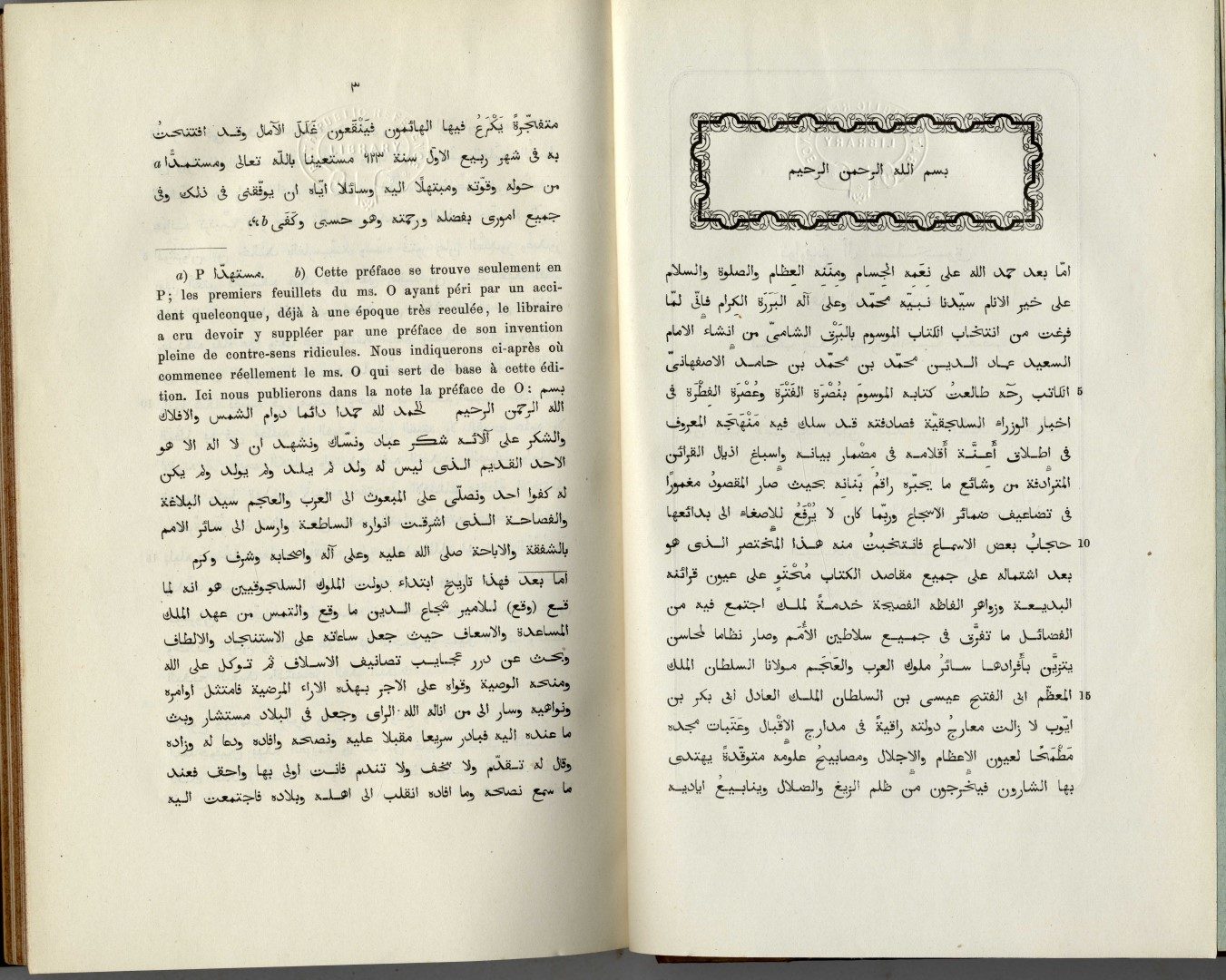Histoire des Seljoucides du Kerman, Iraq, Asie-Mineure. THREE VOLUMES.
IBRAHIM, MUHAMMED / AL-BUNDARI AFTER IMAD AL-DIN AL-KHATIB AL-ISFAHANI / IBN BIBI, NASIR AL-DIN / M. TH. HOUTSMA.
Synopsis
Rare and beautiful set. This is a very comprehensive work on the general history of the Seljuk dynasty. Houtsma presented their history to Europeans based on original Persian, Arabic and Turkish sources. The first volume covers the history of the Seljuks in Persia based on an original manuscript by Muhammed Ibrahim, kept in Berlin. It is accompanied by an alphabetical index, historical and philosophical notes.
The second volume covers the history of the Seljuks in Iraq, based on an original Arabic manuscript by Imad ad-Din al-Khatiba al-Baghdadi, kept in Oxford and Paris.
The third volume covers the Seljuk history in Asia Minor from the death of Kilig Arslan (1192 AD) until 1225. The text was based on a Turkish manuscript by Nasir al-Din Ibn Bibi, kept in Leiden and Paris.
The Seljuk Empire was an early medieval Turko-Persian empire, originating from the Qynyq branch of the Oghuz Turks. It controlled a vast area stretching from the Hindu Kush to eastern Anatolia and from Central Asia to the Arabian Gulf. From their homelands near the Aral Sea, the Seljuks advanced first into Khorasan and then into mainland Persia before eventually conquering eastern Anatolia.
The Seljuk Empire was founded by Tughril Beg in 1037 after the efforts by the founder of the Seljuk dynasty, Seljuk Bey, in the first quarter of the 11th century. Seljuk Bey’s father was in a high position in the Oghuz Yabgu State, and he gave his name to both the state and the dynasty. The Seljuks united the fractured political scene of the Eastern Islamic world and played a key role in the first and second crusades. They also played an important role in the development of the Turko-Persian tradition, even exporting Persian culture to Anatolia. The settlement of Turkic tribes in the north western peripheral parts of the empire, for the strategic military purpose of fending off invasions from neighbouring states, led to the progressive Turkification of those areas.








